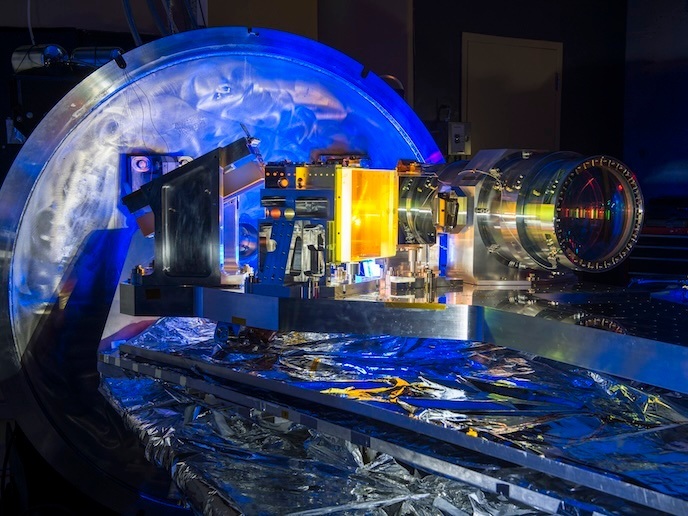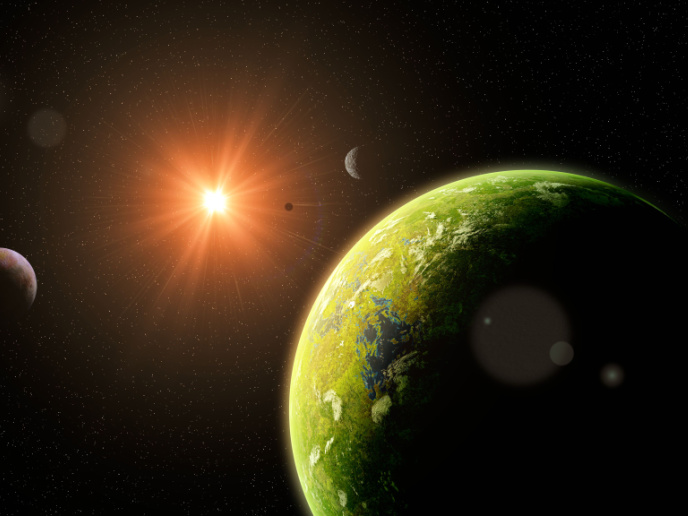Stellar wobbles shed light on stars and their planetary systems
SPIRou (SpectroPolarimètre InfraRouge), a high-resolution infrared instrument installed at the Canada-France Hawaii telescope (CFHT) on the summit of Mauna Kea volcano, Hawaii, looks at planetary systems around small stars close to the Solar System. These stars, about a third to a tenth of the Sun’s mass and less bright as they are cooler than the Sun, are known as red dwarfs. “If we want to get most of their light, we need to look at them in the infrared, so we developed this infrared instrument,” explains NewWorlds project coordinator Jean-François Donati, director of research at France’s National Centre for Scientific Research (CNRS). The NewWorlds project was funded by the European Research Council. Around 80 % of stars closest to the Solar System are red dwarfs. “If we want to know the planetary systems closest to us, we have to look at these stars. Only an infrared instrument can do that efficiently,” Donati notes.
Stellar wobbles indicate planets nearby
The SPIRou instrument, devised and constructed by the project, uses high-precision velocimetry to measure radial velocity. When combined with infrared spectropolarimetry which measures and maps fluctuations in the magnetic fields of stars, this can detect tiny wobbles. The wobbles can indicate the presence of orbiting planets in distant star systems to a precise degree. “You don’t see the planets themselves, but rather the impact of the planet on the star. The star responds to the gravitational pull of its rotating planets, so you see the star wobbling around,” Donati says. The project has so far discovered some 10 new planets around red dwarfs by detecting stellar wobbles. “It is not easy, as small stars have smaller planets, which generate very small wobbles,” according to Donati.
Cleaning up wobble data
“The problem is that the stars, like the Sun, are extremely active. They have big spots and magnetic fields that also generate a wobble, so you need to disentangle that from the wobble from the planets.” “This challenge has been overcome in the visible domain with various instruments, but it’s never been done in the infrared,” he adds. Multiple observations helped distinguish planetary wobbles from other activity. “Unusually, we were able to observe planetary wobbles over long periods, hundreds of times over 2-3 years.” The project detected some stars with peculiar forms of activity, still to be studied. “These stars had very weird magnetic fields that we didn’t expect,” Donati says.
Observations over time
Magnetic fields have an impact on the formation in the universe of low-mass stars and their planets and contribute to the conditions for life to appear. With many observations over time since SPIRou was installed in Hawaii in 2019, the project was able to characterise a number of planets around red dwarfs, in the hope, ultimately, of finding habitable Earth-like planets outside the Solar System. SPIRou was used to observe the birth of young stars and their planets, also studied in other EU-funded projects such as GASP and SACCRED. A long series of observations can shed light on the birth of planetary systems, Donati notes, pointing to another major discovery by the project: “It looks as if planets are born with densities close to ones we know in the Solar System.” “We find planet bulk densities similar to Neptune’s, which was unexpected. We expected these planets to be larger.”
Keywords
NewWorlds, SPIRou, planets, planetary systems, Hawaii telescope, red dwarfs, infrared instrument, velocimetry, spectropolarimetry, young stars, Neptune




